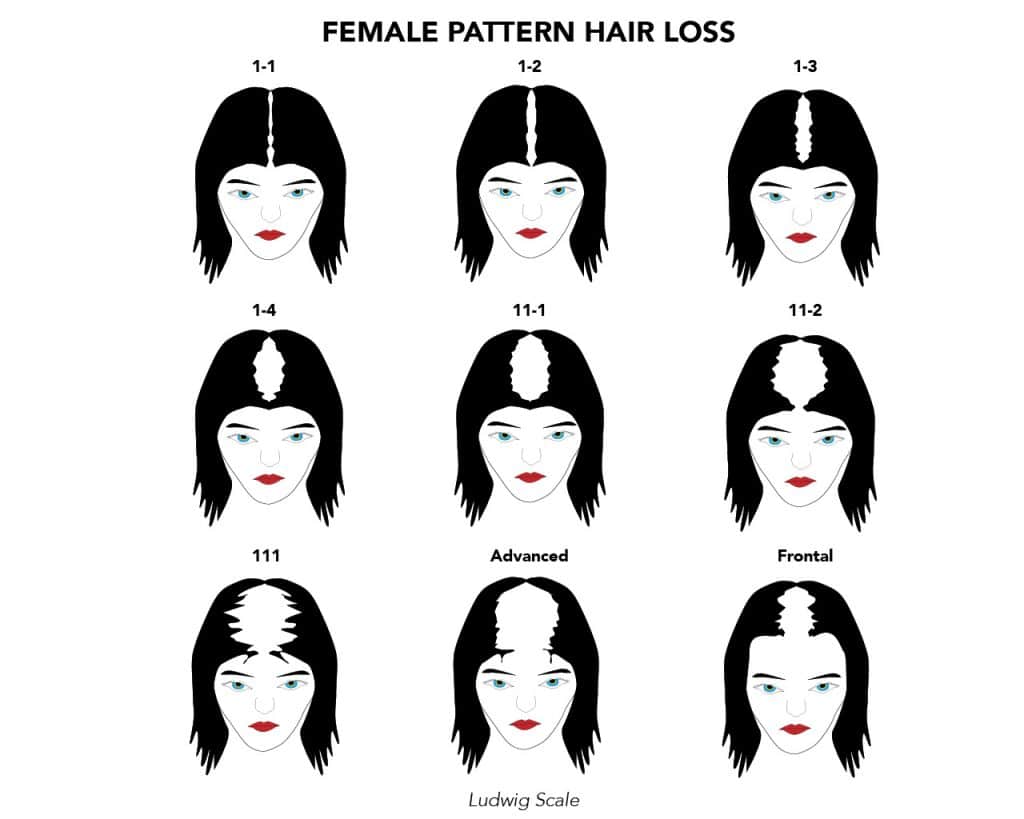
Female pattern hair loss is relatively common and affects about 40% – 50% of women with some degree of thinning in their lifetime. Female pattern hair loss is different from male pattern loss and tends to be more diffuse. Psychologically, the effects of hair loss for women can be significant and negatively affect their self-confidence in both personal and professional environments.
There are a number of causes of hair loss in women. Most commonly, female pattern hair loss is caused by the actions of two enzymes: aromatase (found predominately in women), and 5-alpha-reductase (found in both men and women). In many cases, there is no clear etiology for the hair loss in women and an experienced physician should perform a thorough workup. There are several causes of hair loss in women such as thyroid or iron deficiency, hormone imbalances, gynecologic conditions such as polycystic ovary disease, or stress. In some cases, a scalp biopsy may need to be done for the diagnosis.
The pattern of hair loss in women tends to be more diffuse than men. The Ludwig scale is typically used to classify hair loss patterns in women. Additionally, some women develop significant hair loss in the frontotemporal angles, which limits them from pulling their hair back.
Type I: Hair loss is so mild at this stage that many women are unaware it has occurred. The visible hairline is usually unaffected.
Type II: In this stage, hair loss becomes more moderate and noticeable. Women might experience an increase in shedding and thinning of the hair.
Type III: Hair thinning is more difficult to camouflage at this stage as hair loss becomes more severe. Unfortunately, women with this stage of hair loss may not be good candidates for surgery.
